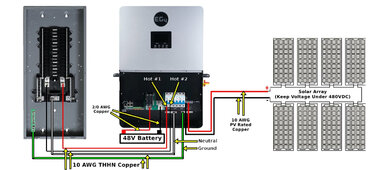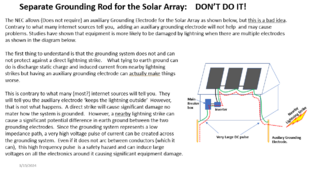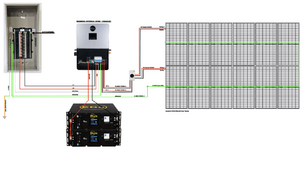Old thread but someone revived it and I saw this post so I'm going to input on the subject.
Double bond in an RV could be deadly as it will lead to hot skin.
I know
firsthand with my work trailer 20 some years ago. Stationary application it usually isn't a big deal although in years past someone carrying a metal cased power tool plugged into an extension cord could be found later on the damp ground dead.
My suggestion to anyone using an inverter that does not dynamically bond when under inverter power or does not desire a dynamically bonded inverter is to use a bonding plug that is a receptacle with N-G bonded on the male end of the RV cord. One could even use a dummy receptacle box like this
50A box where it is permanently mounted and the cord plugged into it. Only connection internally would be N to G.
or if the cord is
removeable NEMA L5-30R then purchase an end like that one and internally bond N and G.
If done this way, if switching between inverter, shore power or generator, there should not be a problem.







